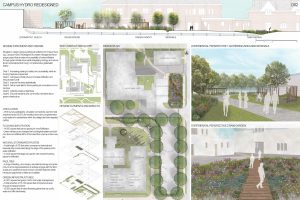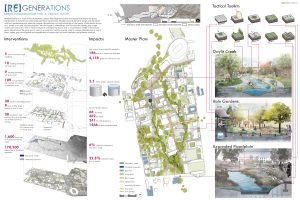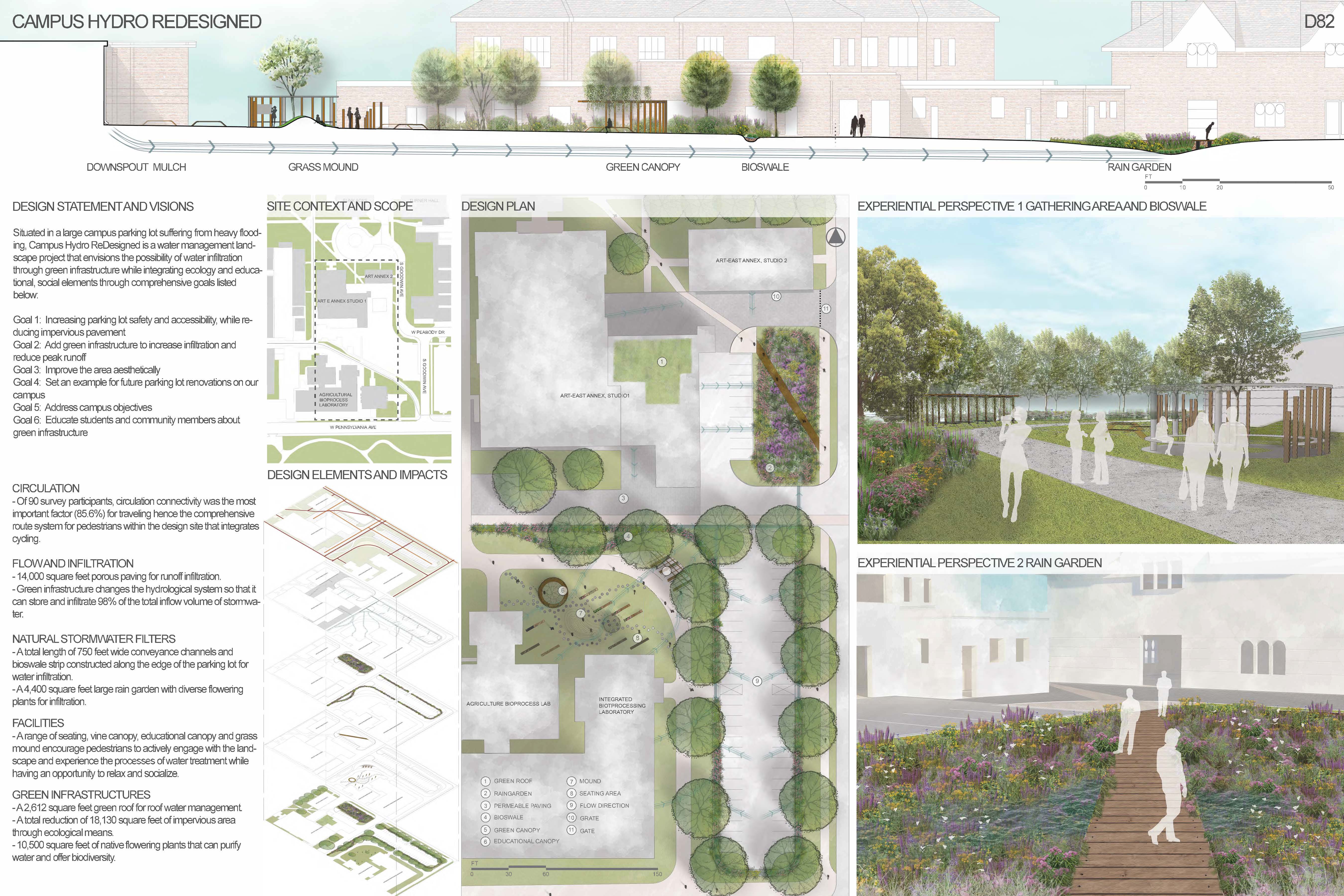
The U.S. Environmental Protection Agency’s (EPA) 2018 Campus RainWorks Challenge is now open for registration through Sept. 30. U.S. Environmental Protection Agency.
The U.S. Environmental Protection Agency’s (EPA) annual Campus RainWorks Challenge is now accepting registrants until Sept. 30. This annual competition seeks to engage with the next generation of environmental professionals; foster a dialogue about effective stormwater management; and showcase the environmental, economic, and social benefits of green infrastructure practices.
To participate in this competition, teams must register to participate by Sept. 30
Sustainable designs wanted
Campus RainWorks calls on student/faculty teams of any size to design green stormwater infrastructure measures suited to the unique layout and hydrological conditions of their university. Interested teams may develop designs for either the Master Plan category, which includes large-scale, long-term green infrastructure conceptual plans covering at least 6 ha (15 ac), or the Demonstration Project category, dealing with proof-of-concept-level designs that handle local stormwater runoff at a scale of 6 ha (15 ac) or less.

During the 2017 Campus RainWorks Challenge, a proposal titled, “Campus Hydro ReDesigned” from the University of Illinois–Champaign won first place in the Demonstration Project category. The design would install a network of green infrastructure improvements around an on-campus parking lot, sharply reducing impervious surfaces and completely mitigating runoff from the impenetrable surfaces that remain. U.S. Environmental Protection Agency/University of Illinois-Champaign.
In a first for Campus RainWorks, teams entering the 2018 Demonstration Project category now have the option to develop green infrastructure for nearby elementary, middle, and high schools instead of for their own university campuses.
In addition to providing their communities with a viable path toward better stormwater management, one first-place winner in each category will receive $2000 to be split evenly among student team members, as well as a faculty prize of $3000. One second-place winner in each category will receive $1000 to be split evenly among student team members, as well as a faculty prize of $2000.
Preparing a submission
Both categories require the same set of entry materials, to be delivered via email to RainWorks@epa.gov by 11:59 p.m. EST on Dec. 14, 2018:
- One project narrative. A written summary of the team’s work, and how the proposed design is expected to perform, demonstrate resilience, and be maintained. The summary should also touch on the project’s likelihood and feasibility of implementation, as well as the co-benefits it will provide beyond stormwater management. Project narratives may be no more than 16 pages in length.
- One design board. Teams must create a 61-cm x 91-cm (24-in. x 36-in.) poster that provides visual context for the design’s installation location. The design board, to be submitted as a PDF file, should include information about how the design will appear and interact with the site using as few words as possible.
- One video pitch. An open-ended, 3-minute-maximum video that persuasively outlines the potential benefits of the design to the university in any way the team sees fit. According to EPA, some example approaches include tours of the installation sites, interviews with experts, or an overview of project funding mechanisms.
- One letter of support. Teams must collaborate with their university’s facilities planning department or other community authority on construction to ensure the viability of their design. As proof of this collaboration, teams must submit a signed letter of support from facilities staff on appropriate letterhead.

A proposal to connect a campuswide network of green infrastructure to the Strawberry Creek in Berkeley, Calif. picked up the top prize in the Master Plan category for the 2017 RainWorks Challenge. The design, which included a long-term implementation schedule, claims to be able to capture 100% of the campus’ stormwater runoff by 2100 while improving water quality in the Strawberry Creek watershed. U.S. Environmental Protection Agency/University of California, Berkeley.
Completed submissions will be reviewed in two rounds by a set of judges that includes EPA staff, industry professionals, and academics from non-competing colleges and universities. Designs will first be scored on a scale between 0 and 100 points on such criteria as expected level of performance, creativity, viability, and comprehensiveness of submission materials. A lead judge from EPA’s Office of Water then will choose winners from top-scoring proposals, with winners slated to be announced in spring 2019.
Learn more about 2018 Campus RainWorks Challenge rules and procedures at the EPA website. Register to participate by Sept. 30.




